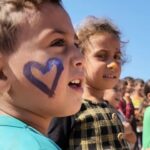
For many in Gaza, Israel’s genocidal war could never really end. Even if the fragile United States-brokered ceasefire were successful in halting deadly attacks on the besieged enclave, which it so far has not, loud booms would still echo in the minds of those Palestinians who survived more than two years of brutal conflict.
Fifteen-year-old Abed al-Aziz Abu Hawishal has seen scenes no teenager should ever witness. “We were taking refuge in a house in Gaza City when the Israeli military stormed in,” he told Al Jazeera. “They dragged me close to a tank, and one of the soldiers pointed his gun at my head.”
- list 1 of 3“Displacement is a real challenge” in finding Gaza’s missing
- list 2 of 3Turkiye’s Erdogan urges Germany to help end Israel’s ‘genocide’ in Gaza
- list 3 of 3Israel’s dual-national snipers
end of list
The memories of a “massacre” he witnessed near his home have left him withdrawn, haunted by thoughts he can’t escape. “Bodies were flying over our house. I saw a woman without a head, and I even stepped on bodies as I ran, terrified for my life,” he said.
The psychological trauma triggered a response in his body, causing high blood pressure, chronic diarrhoea, and, most recently, kidney failure.

Similarly, the psychological trauma has left visible marks on eight-year-old Lana al-Sharif. Other residents of the displacement camp in Khan Younis call her “the elderly child” as her once dark and shiny mop of hair is now tinged with grey.
Her father, Khalil al-Shareef, said Lana survived an Israeli air strike that collapsed the roof of their home. She developed vitiligo, a chronic skin condition that causes the loss of skin, hair, and eye colour, as a result of exposure to the smoke and chemicals from the missiles.
Advertisement
“Many doctors have tried to treat her, but without success,” her father said. “She panics every time she hears an explosion.”
Psychologists warn that more than 80 percent of Gaza’s children now show symptoms of severe trauma.

Sabreen Abu Rahman, a therapist treating traumatised children, said mental trauma is often accompanied by symptoms including headaches, stomach aches, bone pain, hair loss, vitiligo, and weakened immunity.
The UN children’s agency UNICEF estimates that more than 64,000 children have been killed or injured in Gaza. Homes, hospitals and schools have been destroyed, while essential medical services have collapsed.
UNICEF Middle East and North Africa Regional Director Edouard Beigbeder said “one million children have endured the daily horrors of surviving in the world’s most dangerous place to be a child, leaving them with wounds of fear, loss and grief.”
Since a ceasefire took effect on October 10, Israeli attacks have killed dozens of Palestinians across the enclave. From Tuesday into Wednesday, the Health Ministry in Gaza said Israeli attacks killed 104 people, including 46 children and 20 women.
Beigbeder said the truce “must hold and it must deliver more than calm, it must deliver action … The world cannot allow this ceasefire to fail.”
British Caribbean News

